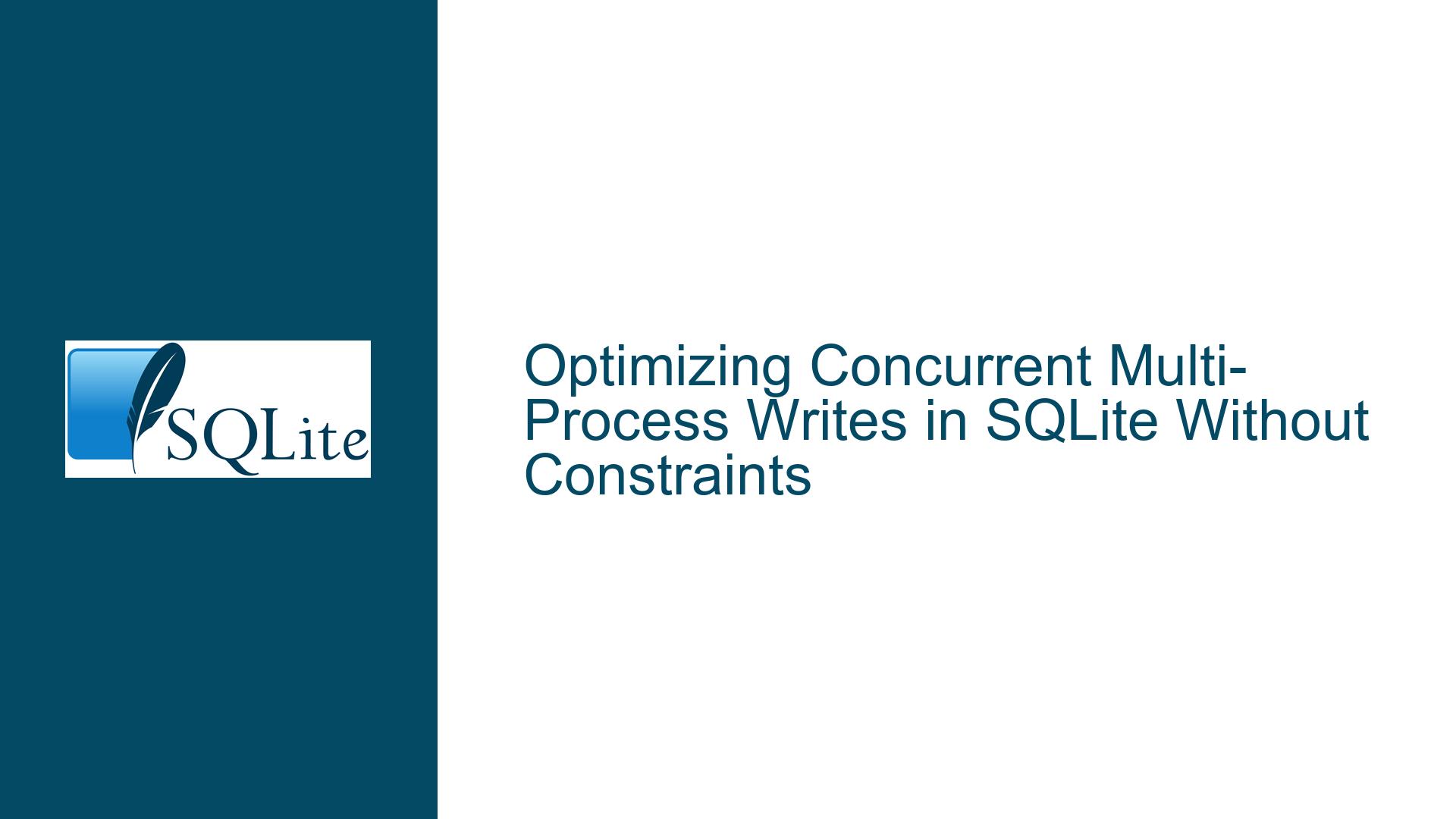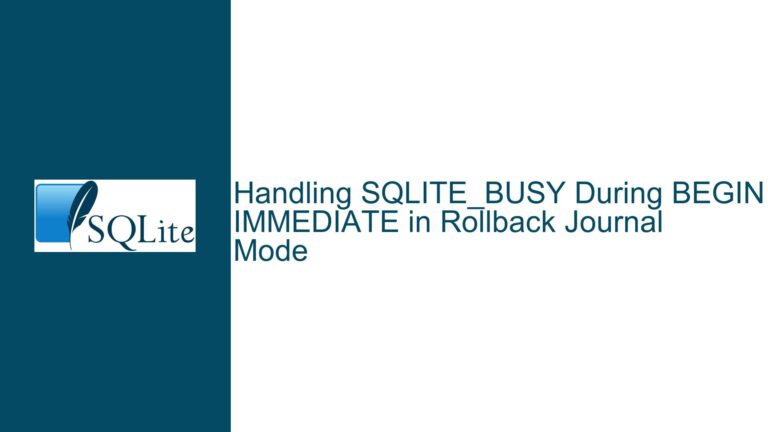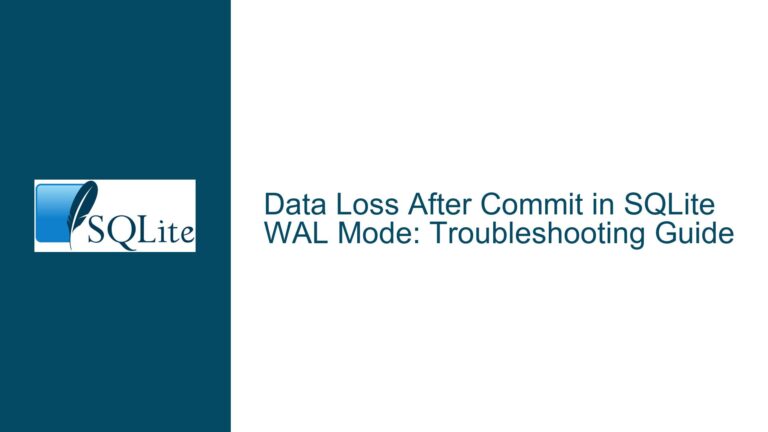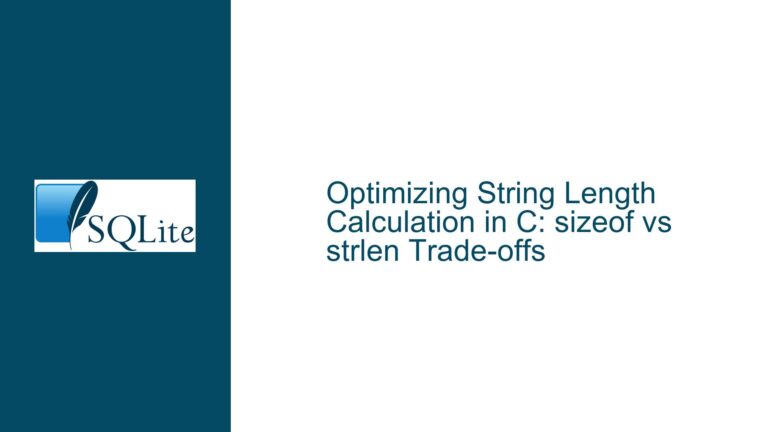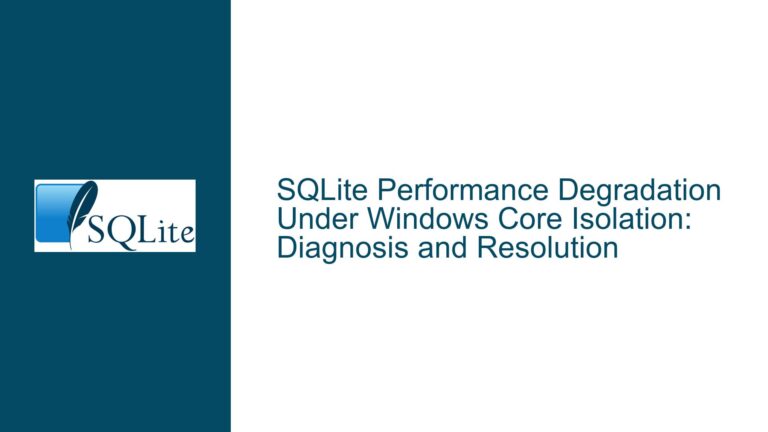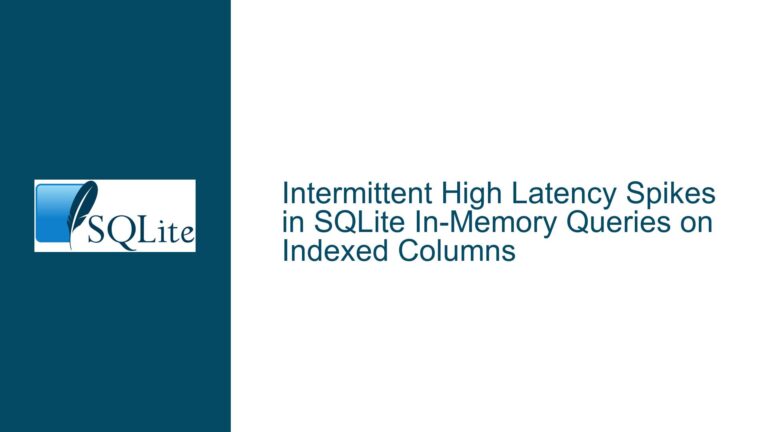Optimizing Concurrent Multi-Process Writes in SQLite Without Constraints
Scenario: High-Volume Parallel Data Ingestion Without Read Requirements
A system is designed to execute a "run" composed of multiple independent processes, each generating tens of gigabytes of data over several hours. Each process operates in a single-threaded context, writing data in chunks (tens to hundreds of thousands per process). The final output must reside in a single SQLite database. No concurrent reads occur during the run, and the schema lacks constraints (UNIQUE, FOREIGN KEY). The core challenge is determining whether parallel writes to separate databases (later merged) or synchronized writes to a shared database yield better performance. This scenario involves tradeoffs between I/O contention, transaction management, and post-processing complexity.
Critical Factors Impacting Write Performance in Multi-Process Workflows
I/O Saturation and Locking Contention
SQLite employs a writer lock to enforce single-writer concurrency. When multiple processes attempt to write to the same database file, contention arises even with brief lock acquisitions. In workloads involving frequent small transactions (e.g., per-chunk commits), lock coordination overhead dominates. Without constraints, schema validation is minimal, but file system latency and seek times for scattered writes degrade performance.
Transaction Granularity and Journaling Modes
The default SQLite journaling mode (DELETE) requires rewriting the entire database file to a temporary location for crash recovery, creating I/O amplification. Write-Ahead Logging (WAL) mode reduces this by appending changes to a separate file, but concurrent readers can block writers. Since no reads occur during the run, WAL mode avoids reader-writer conflicts but introduces write-write synchronization challenges when targeting a shared database.
Database File Proliferation vs. Merge Complexity
Writing to separate databases eliminates write contention but requires merging data post-run. Merging involves attaching databases and bulk-inserting records, which can be optimized if tables are append-only. However, merging indexed tables or those with auto-incrementing primary keys introduces complexity. The absence of constraints simplifies merging but demands careful schema alignment.
Strategic Implementation and Configuration for Maximum Throughput
1. Isolate Writes Using Per-Process Databases
Rationale: Eliminate write contention by assigning each process a dedicated database. Configure each database with:
PRAGMA journal_mode = OFF; -- Disable journaling (risk tolerance required)
PRAGMA synchronous = OFF; -- Bypass OS fsync() calls
PRAGMA locking_mode = EXCLUSIVE; -- Acquire lock once per connection
These settings maximize raw write speed at the expense of crash safety. Since processes are ephemeral and data is rebuilt on failure, this tradeoff is acceptable.
Chunk Batching: Group chunks into larger transactions. For example, commit every 10,000 inserts instead of per chunk:
# Python pseudocode
chunk_buffer = []
for chunk in generate_chunks():
chunk_buffer.append(chunk)
if len(chunk_buffer) >= 10_000:
with db_connection:
db_connection.executemany("INSERT INTO data VALUES (?)", chunk_buffer)
chunk_buffer.clear()
# Commit remaining chunks
if chunk_buffer:
with db_connection:
db_connection.executemany("INSERT INTO data VALUES (?)", chunk_buffer)
This reduces transaction commits from O(n) to O(n/10,000), minimizing lock coordination and journal flushes.
2. Merge Process-Specific Databases Efficiently
Schema Preparation: Ensure all per-process databases share identical schemas. Pre-create the final database with:
PRAGMA page_size = 65536; -- Match OS cluster size for bulk writes
PRAGMA auto_vacuum = NONE; -- Avoid vacuum overhead during merge
CREATE TABLE data(...); -- No indexes until post-merge
Parallel Attach and Insert: Use a script to attach each process database and copy data:
ATTACH DATABASE 'process1.db' AS p1;
INSERT INTO main.data SELECT * FROM p1.data;
DETACH DATABASE p1;
Execute these steps sequentially per database. For large datasets, batch the INSERTs using LIMIT and OFFSET to avoid memory exhaustion.
Post-Merge Optimization: After merging all data, rebuild indexes and enable constraints:
CREATE INDEX ...; -- Apply indexes post-merge
PRAGMA journal_mode = WAL; -- Enable WAL for future read-heavy workloads
PRAGMA synchronous = NORMAL; -- Restore durability
3. Alternative: Shared Database with Controlled Concurrency
If merging is undesirable, configure a shared database with:
PRAGMA journal_mode = MEMORY; -- Store journal in RAM (volatile but faster)
PRAGMA temp_store = MEMORY; -- Keep temp data in RAM
PRAGMA busy_timeout = 5000; -- Retry locked writes for 5 seconds
Use a connection pool per process to reuse prepared statements. Leverage BEGIN IMMEDIATE transactions to acquire locks eagerly:
with db_connection:
db_connection.execute("BEGIN IMMEDIATE")
# Perform batch inserts
db_connection.commit()
Monitor I/O wait times using OS tools (e.g., iostat on Linux). If disk utilization exceeds 90%, consider NVMe storage or distributing writes across multiple physical devices.
4. Filesystem and Hardware Considerations
- Use a filesystem with low metadata overhead (e.g., XFS, ext4 with dir_index).
- Isolate database files on dedicated storage to avoid contention with other processes.
- Preallocate database files to the expected final size using
PRAGMA schema.page_sizeandPRAGMA schema.max_page_countto prevent dynamic expansion.
Validation Metrics
- Measure
pages_writtenandwrite_countfromsqlite3_db_status()to quantify I/O. - Profile lock wait times using
sqlite3_snapshot_get()and custom logging. - Compare merge duration against concurrent write latency using synthetic benchmarks.
Failure Recovery Design
- Maintain a manifest of process databases and their checksums to validate merge inputs.
- Implement idempotent merge scripts that resume from the last attached database.
- Archive process databases post-merge for auditability.
Final Recommendation
For environments prioritizing write speed and operational simplicity: Use per-process databases with batched transactions and disabled durability PRAGMAs, followed by a sequential merge into a final optimized database. This approach minimizes lock contention, leverages sequential I/O during merging, and isolates process failures. In storage-constrained systems where merge latency is prohibitive, a shared database with WAL mode and aggressive batching is viable but requires thorough I/O subsystem benchmarking.
